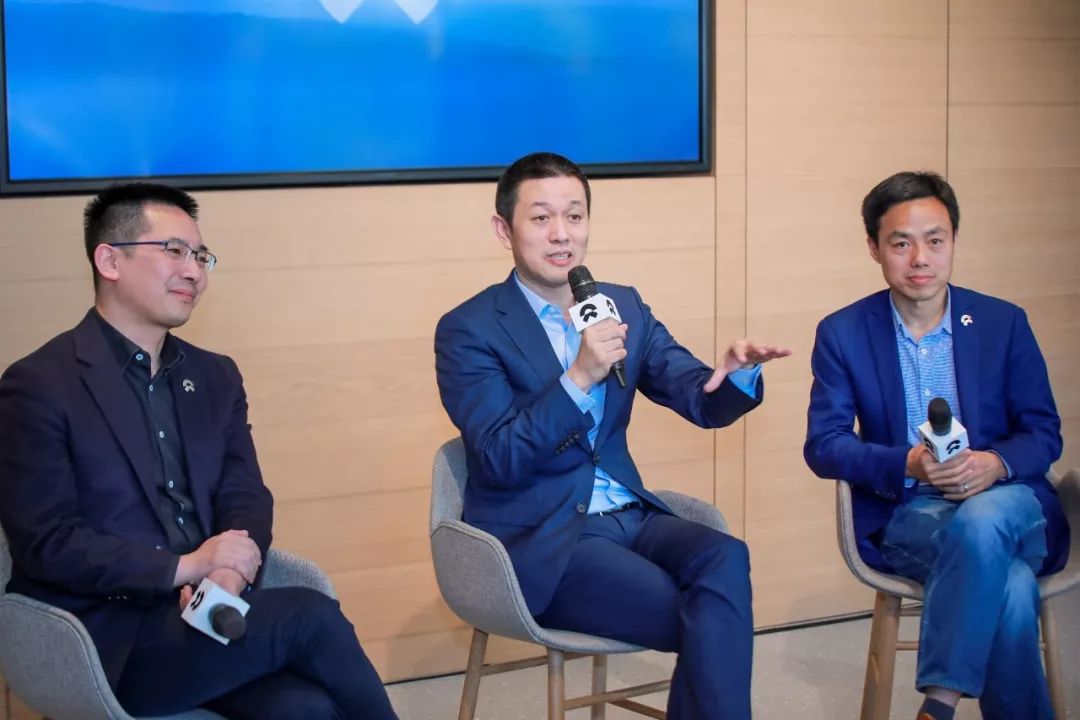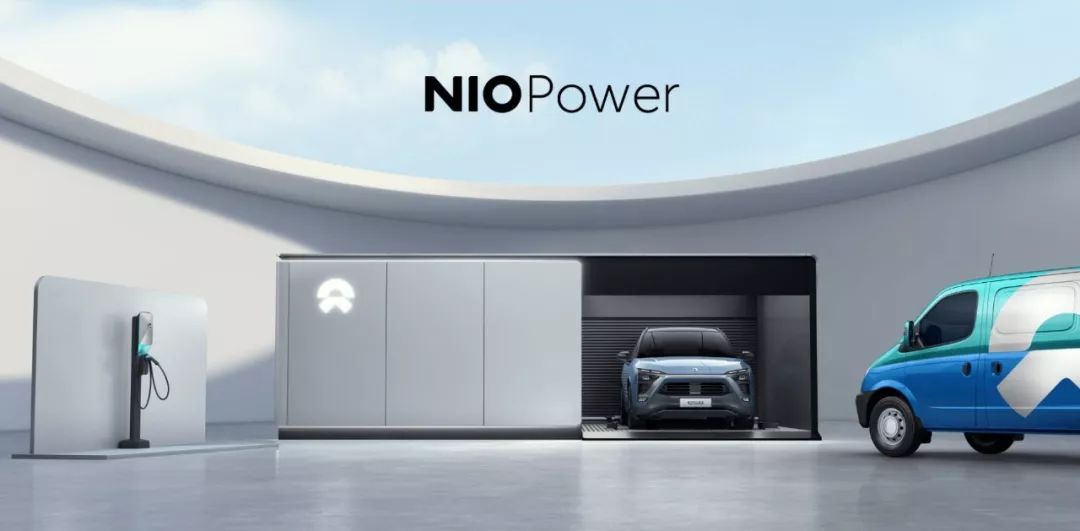On April 11th, the third NIO Center in Shanghai opened in the MixC mall. More importantly, NIO finally announced its 2019 battery upgrade plan. Although the ES8 is good for commuting within the city, its range still affects travel efficiency for longer distances between cities. In the past year, NIO’s energy service system has built a rich solution for energy replenishment for different charging scenarios.
Let’s briefly talk about the details of the battery upgrade plan. For ES8 owners, NIO has launched the following battery upgrade services:
-
Permanent battery upgrade service: Pay CNY 50,000 to permanently upgrade the battery capacity from 70 kWh to 84 kWh.
-
Flexible battery upgrade service: Pay CNY 66 per day to temporarily upgrade the battery capacity from 70 kWh to 84 kWh.
(According to NIO’s press conference, the founding version of ES8 and vehicles purchased before March 31st, 2019 and during the pre-order period can enjoy a six-fold discount for the permanent battery upgrade, priced at CNY 30,000, and a temporary upgrade price of CNY 39 per day.)
What is our view of NIO’s battery upgrade plan? From software, hardware to business models, NIO has truly established a differentiated capability for energy replenishment, making it a unique player in the pure electric vehicle industry.
The so-called “true differentiation” refers to the difficulty of replicating the solutions for varying range anxieties from different car manufacturers.
Firstly, for Tesla, behind the third-generation supercharging network is not only the improvement of charging specifications and power supply network capabilities, but also the balance between battery tolerance rate and energy density, which is a solution based on absolute leading electrochemical technology.
Meanwhile, the ideal ONE from Chehejia utilizes an extended range electric drive (full-time motor drive), which solves range anxiety through refueling and power generation using existing gas station networks. If viewed from the perspective of the product cycle of positive development, the difficulty of replication is equally high.
NIO’s battery upgrade plan is different from the hardware-level battery swap structure to the software’s different versions of battery management, circulation, software restrictions and unlocking, and to the support of the business model. From a market perspective, this is the most differentiated solution, and the difficulty of replication is very high (except for Tesla, which has verified the battery swap solution). From the perspective of enterprise development, NIO has greatly increased the complexity of its operations, and this complexity itself is part of the business barrier.NIO currently has five different types of range extension methods: home charging, destination charging, supercharging (to be launched soon), battery swapping, and mobile charging vehicles, covering various charging scenarios for users’ needs. NIO provides users with another energy supply solution through flexible range upgrades (especially daily rentals).
After the press conference, I had the opportunity to interview NIO CEO Li Bin, President Qin Lihong and NIO Power Vice President Shen Fei. From their comments, we could gain a better understanding of NIO’s concepts, as well as the commercial feasibility and development status of this business model.

The first question concerns commercial feasibility. Without commercial feasibility, the best user experience is just an empty talk.
NIO’s energy service system operates somewhat differently from what people generally imagine.
Shen Fei revealed several figures. As of Q1, NIO has delivered 15,337 ES8s, and more than 120 battery swapping stations have been deployed across the country, each with an average of 3 batteries. In total, there are over 600 batteries. A simple calculation can reveal that NIO has deployed 4% of batteries to support 100% of the user’s battery swapping needs nationwide.
Why is the actual operation of NIO’s battery swapping system somewhat different from what most people think? To a large extent, it is because people’s thinking about the problem is too binary. In the era of gasoline vehicles, the total capacity of gas stations was calculated by multiplying the total number of gas stations by the capacity of each gas station. Apart from gas stations, users had no other energy supply options. However, this formula does not apply to NIO’s battery swapping stations, as users can also choose supercharging, home charging, mobile charging vehicles, and future range upgrade plans.
Moreover, according to NIO’s statistics, the two battery swapping stations with the highest usage, located in Shanghai and Shenzhen, have an average of only 30 swaps per day. But with 5 batteries stored per station and 8 charges per day (the swapped batteries can be charged immediately at the swapping station), each station’s peak service capacity can actually reach 40 swaps per day.
Considering NIO’s battery swapping stations only have an average of 3 batteries stored, the service capacity of most of these stations is far below 30 swaps per day. However, without expansion, NIO’s battery swapping system still has considerable service expansion capacity.
 And this is just one part of the NIO Power system. Let’s talk about the mobile charging car, a product that brought NIO a lot of doubts and ridicule last year. Today, NIO has deployed 400 mobile charging cars nationwide to support the mobile charging needs of 15,337 ES8s across the country. That’s an average of 38 ES8s supported by each mobile charging car.
And this is just one part of the NIO Power system. Let’s talk about the mobile charging car, a product that brought NIO a lot of doubts and ridicule last year. Today, NIO has deployed 400 mobile charging cars nationwide to support the mobile charging needs of 15,337 ES8s across the country. That’s an average of 38 ES8s supported by each mobile charging car.
And “that’s not all”: on March 27, NIO officially opened its one-click charging service to third parties. Non-NIO users only need to download and register on the NIO App and initiate the request to experience the one-click charging ability.
This shows that NIO’s mobile charging car service capability is also surplus, to the point that it can still operate smoothly after being opened to third parties. As for why a third party would use NIO’s one-click charging service, if you are an electric vehicle owner, you will deeply understand the high cost-effectiveness of one-click charging and calling for towing when stranded due to inadequate range.
In fact, a very critical and indisputable data behind this is that 78% of NIO owners have installed home chargers.
Going back to the recently released range upgrade service, what does it mean?
We have to go back to the age-old question of whether an ES8, a large seven-seater SUV with a 70 kWh battery pack, is sufficient or not.
First of all, if it is for daily commuting, not many people will have a daily commute mileage requirement of around 200 km. So even though ES8 is considered by many people to be the electric vehicle with the most severe range anxiety ever, when used for commuting, ES8 does not bring serious range anxiety. As long as it can last until the end of the day (don’t forget the 78% home charger installation rate mentioned above), the ES8 can be fully resurrected.
Simply put, in most cases, the ES8 is actually sufficient. But what if I need to go on a long trip? Range upgrade.
When you have a long-distance travel demand, you can upgrade to an 84 kWh battery pack for 66 yuan per day for several days. When returning to the daily commuting scenario, you can switch back to the 70 kWh battery pack and stop paying for the upgrade. You might say, how much can the range be increased with the 84 kWh ES8, which has an NEDC standard range of only 425 km?
What I want to say is that although we all hate to see PPT drawing big cakes, we can all see the fast improvement in battery technology. Tesla CTO JB Straubel once said that battery energy density continues to improve at a rate of about 5-10% per year. Will NIO introduce larger battery packs by 2020? These are all technically and commercially feasible.
Today, NIO cannot remotely lock/unlock battery pack specifications. Therefore, there is still room for improvement in efficiency and experience when a vehicle goes to a battery swap station to change an 84 kWh battery pack.The ideal scenario is that, as the energy density of batteries increases and costs decrease, NIO will gradually deploy 84kWh battery packs, which support worry-free energy and battery swaps, for users who have purchased them in batches to replace the 74kWh battery packs. At this time, most car owners are actually using a large battery pack with an actual available capacity of up to 84kWh, but the software restricts it to 70kWh. When users have a need for range upgrades, they only need to initiate a request on the App side, and NIO’s cloud will push an OTA update to unlock the remaining capacity. Compared to today’s road service team picking up cars and going to exchange stations to exchange batteries and cars, the cost of software-managing battery pack specifications will be greatly reduced, while user experience and efficiency will be greatly improved.
As mentioned earlier, from software, hardware to business models, NIO has built truly differentiated energy replenishment capabilities. Many people may say, “Isn’t it just a battery swap? What’s so impressive about that? Tesla abandoned this technology route.”
The software here refers to NIO’s yet-to-be-landed technical ability to lock/unlock battery pack specifications, and the different temperature control circuit designs and balancing management of different battery packs are also different. The BMS that comes with the ES8 from the factory actually can be compatible with 5 different sizes of battery packs. This is the R&D work that needs to be done at the software level.
On the hardware level, NIO’s 84kWh battery pack weighs 505kg, and the 70kWh battery pack weighs 525kg. Therefore, there is no problem with the change in weight affecting handling and safety from the perspective of weight, but the impact of the battery pack specifications on the whole vehicle does not disappear just because it becomes lighter. In fact, NIO’s ES8/ES6 chassis, VCU, and mechanical structure have tested different battery pack specifications during product development to ensure the stability of the mechanical structure and prevent problems such as a decrease in the stability of the entire vehicle structure or deformation caused by different battery pack specifications.
Regarding the replication difficulty of NIO’s range upgrade, I said earlier that “except for Tesla, which has verified the battery swap scheme,” because Tesla has indeed implemented the battery swap on the hardware research and development level and has also offered a paid 100kWh upgrade service for Model S 90D owners. At the same time, Tesla has long been skilled in software locking/unlocking.
However, some models NIO is attempting to pursue may raise the barrier to entry for range upgrade services based on battery swaps, which Tesla has not continued to pursue.
What I’m talking about is the complexity of NIO Power’s business operation level. Even in the coming year, when the third type of battery pack has not yet been released, NIO will need to manage the three battery pack specifications of 70kWh, 84kWh, and 84 software-limited 70kWh through software, and match them with the supply and demand of ES6, ES8, and ET7. When supply and demand do not match, NIO can only use high-to-low pricing to meet user needs with higher-spec battery packs.This means that NIO either needs to leave enough redundancy or must achieve efficient supply and demand matching. This year’s battery production can support 100% of the demand for battery swap with a total amount of only 4%, but the challenge will increase significantly next year.
In fact, NIO already has a good user experience for battery swap and mobile charging services. With these two services in place, the demand for battery upgrade services is not as urgent as imagined. However, NIO still chooses to launch the battery upgrade service to meet even the smallest demands. For NIO, the complexity of its operations has increased significantly.
From product definition to R&D, sales, operations, and energy services, except for used car and manufacturing, NIO has done everything in the automotive lifecycle circulation. Therefore, when we assess NIO, we must first recognize that it is the company that values user experience the most in the world. In the process of improving the user experience step by step, NIO constantly enhances its business complexity and slowly establishes its own barriers.

-
NIO: ES6 starts the large-scale delivery tomorrow, ES8 can be purchased at a 0% interest rate
-
What is your view of NIO Power? How does NIO change the industry?

This article is a translation by ChatGPT of a Chinese report from 42HOW. If you have any questions about it, please email bd@42how.com.
